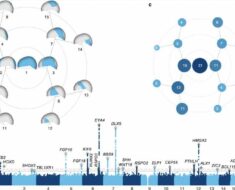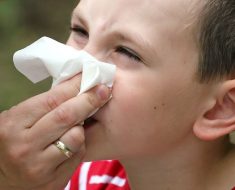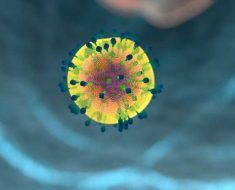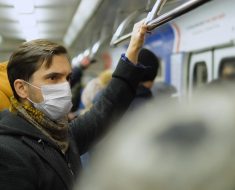Photobiomodulation, which uses low-level red infrared light, may reduce the severity of chemotherapy-induced peripheral neuropathy (CIPN) and increase mobility in patients with cancer, new research suggests. However, some experts question the study’s validity.
Although the treatment appears to be effective, study investigator Marithé Claes, MSc, PhD student, faculty, Medicine and Life Sciences, Hasselt University, Hasselt, Belgium, noted that patient satisfaction with the technique was only moderate.
“We need larger trials with longer follow-up to really pinpoint the exact parameters of photobiomodulation that could be used in neuropathy treatment,” she said. And we need “to perform correlation analysis to see why some patients react so well to the treatment and other patients did not experience any relief.”
Claes began her presentation by underlining that CIPN is a “common, debilitating side effect” experienced by approximately 68% of all patients with cancer who are receiving cytotoxic agents.
It is “accompanied by both sensory and motor symptoms, such as pain or seizure, and muscle weakness, which limits the quality of life of our patients,” she explained.
“Unfortunately, there are still no fully effective management options for this side effect, and it is often necessary to prematurely stop the chemotherapy or lower the dosage,” she noted.
The results were presented at the Congress of the European Academy of Neurology (EAN) 2023.
Nerve Regeneration
Curative treatment for CIPN currently consists of selective serotonin receptor inhibitor (SSRI) therapy, but not all patients respond in the same way to SSRIs, which come with their own side effects, said Claes.
Photobiomodulation increases activity in the mitochondria, resulting in an increase in adenosine triphosphate levels and levels of reactive oxygen species, calcium, and nitric oxide.
This activates transcription factors, which reduce inflammation and pain and increase functional recovery and regeneration of the peripheral nerves, Claes explained.
“Photobiomodulation therapy is currently being used in our clinic to treat oral mucositis and radio dermatitis,” she added, which prompted the researchers to study its effects in CIPN.
The investigators conducted a randomized trial involving patients aged 18 years or older who had CIPN after completing a course of standard chemotherapy.
Patients excluded from the study were those with dark brown or black skin pigmentation, classified as skin type VI on the Fitzpatrick scale, because this patient population does not respond to the treatment, said Claes.
A total of 60 patients were randomly assigned to receive photobiomodulation at a dose of either 6 J/cm2 or 8 J/cm2 at a minimum of 2 weeks after completing chemotherapy. The treatment was administered twice per week for 3 weeks and applied to the palms of the hands and the soles of the feet.
Participants were assessed at the start photobiomodulation therapy using the modified Total Neuropathy Score (mTNS) and a range of patient-reported outcome measures (PROMs). Patients also completed the 6-minute walk test (6MWT).
The study group was assessed at the end of treatment and again at 3-week and 6-month follow-ups with a satisfaction numeric rating scale (NRS), the PROMs used in the baseline analysis, and the 6MWT.
Study participants had a median age of 63 years, and 75% were women, “which resulted in the most common tumor location being in the breast, and the most common type of chemotherapy being paclitaxel,” Claes said.
The time since chemotherapy was evenly split, with half the patients having stopped their cytotoxic therapy less than 1 year previously and the other half having ended treatment at least 1 year prior to joining the study.
Claes showed that both the lower dose (P = .021) and the higher dose (P = .007) of photobiomodulation were associated with a significant improvement in mTNS scores over baseline.
A more striking result was seen when looking at the 6MWT, with highly significant improvements seen with the lower and the higher dose of photobiomodulation (P < .001 for both).
In both cases, there were no significant differences in outcomes between the two doses.
An NRS used to rate patient satisfaction ranged from 0 (extremely dissatisfied) to 10 (extremely satisfied). NRS scores indicated that overall, patients were moderately satisfied with the treatment with a slight decline in satisfaction at 6-month follow-up.
Claes explained that patients who experienced symptom improvement had very high satisfaction scores, whereas those who experienced no improvement generally gave low scores, resulting in the overall moderate result.
Of interest, photobiomodulation scored higher when patients were asked if they would recommend it to other patients, even among those who gave its efficacy a low score. Claes speculated that this was because even though they were dissatisfied, they “knew it worked for some.”
‘Severely Limited’ Research
Session Co-chair Gianfranco De Stefano, MD, Department of Human Neuroscience, Sapienza University of Rome, Rome, Italy, asked whether the researchers were “sure that the observed effect in the study was mediated by photobiomodulation, since there was no placebo group?”
Claes explained that the team previously conducted a pilot trial examining the ability of photobiomodulation to prevent CIPN, which compared true photobiomodulation to a sham treatment.
“We saw some really great results,” she said, but noted that they found the photobiomodulation was not capable of treating CIPN while the patients were still undergoing chemotherapy.
In undertaking the current trial, the inclusion rate was “really low” when they suggested to patients that they could be assigned to a sham control treatment, and it would take “2 and a half years” to complete the trial rather than the 6 months that it ended up taking.
“But it’s a limitation of our trial,” Claes conceded. Ideally, she said, the researchers want to conduct a multicenter trial with objective parameters, adding that it is a “future plan.”
The lack of a proper control group is a “severe limitation” of the trial, De Stefano told Medscape Medical News.
He added that he was “not sure that photobiomodulation had any effect at all” because the benefit could simply be due to the passage of time.
De Stefano and his colleagues “see a lot of patients” with CIPN and have even observed a “spontaneous improvement in clinical symptoms,” he explained.
He believes that the limitations of the study “probably will not be addressed even by including electrophysiological studies” of peripheral nerve activity because many studies of CIPN have “failed to demonstrate a significant reduction in potentials” even in patients with clinical improvements.
The study was funded by Limburg Clinical Research Center, Kom op tegan Kanker (Stand up to Cancer), the Flemish Cancer Society, and the Limburgs Kankerfonds.
No relevant financial relationships declared.
Congress of the European Academy of Neurology (EAN) 2023. Presented July 3, 2023. Abstract OPR-070
For more Medscape Neurology news, join us on Facebook and Twitter
Source: Read Full Article





